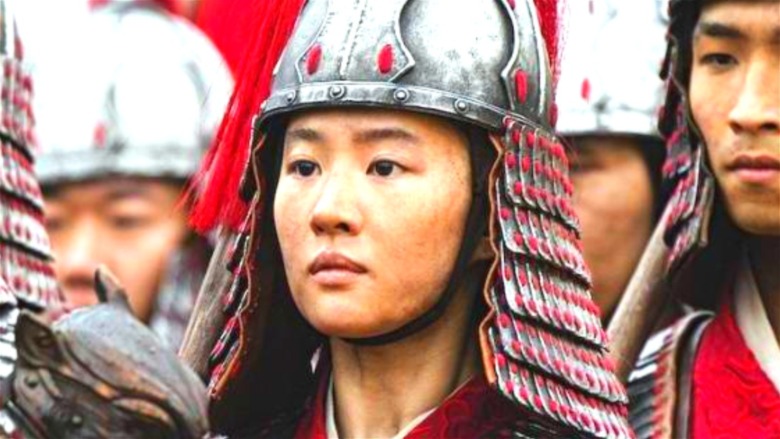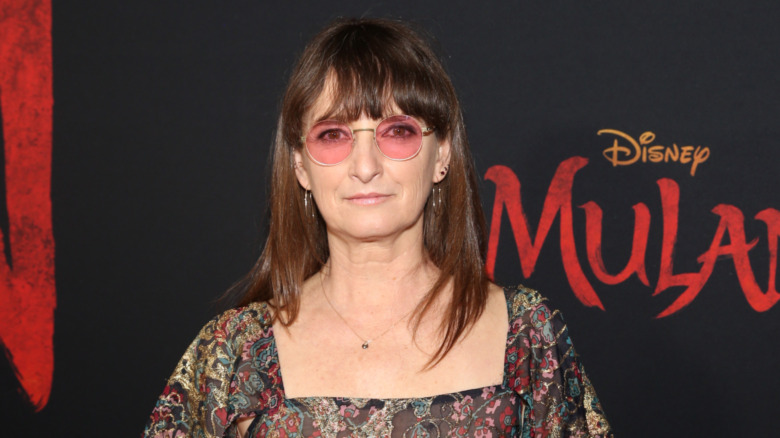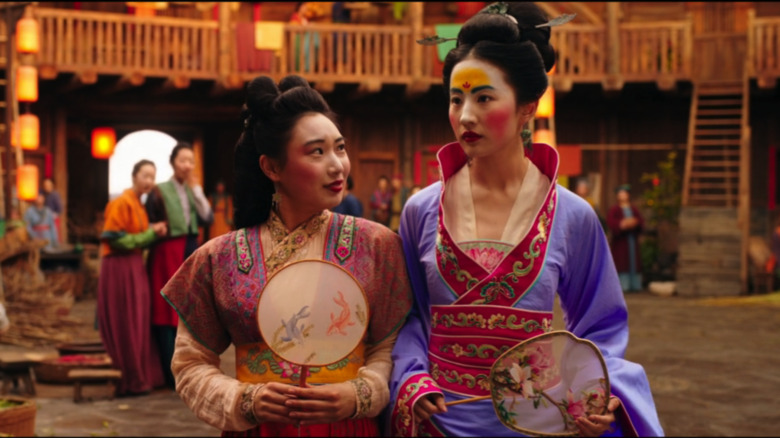Why Mulan's Costume From The Live-Action Mulan Makes No Sense
When Disney+ announced their plans to make the live-action version of "Mulan," fans were initially excited. However, things shifted over the course of production, when controversy surrounding the movie's lead Liu Yifei emerged. When she tweeted her support for the Hong Kong police in the midst of the 2019 protests, she was accused of supporting police brutality. #BoycottMulan started trending on Twitter in the aftermath of her comments, and ultimately hurt the movie's viewership as well as its reception.
The cast and crew of "Mulan" became another point of contention. Though the character Mulan is a Chinese woman and the story is set in China, the majority of the crew was made up of white people. Fans yet again took to social media to vent their frustrations at the lack of diversity behind the camera. The Off Colour organization called out the hypocrisy, tweeting "Disney hired: A white director, a white costume designer, four white screenwriters, a white composer, a white cinematographer, a white film editor, a white casting director. All to 'authentically' tell the story of legendary Chinese warrior Hua Mulan."
The costume designer became a focal point for the backlash, due to her design choices as well as the backstory behind them.
The costume designer's research didn't impress fans
At the premiere of "Mulan," Variety interviewed costume designer Bina Daigeler and asked her how the research process went when working on the film. Daigeler replied that she and her team did a lot of research, which included visiting the Chinese departments in European museums as well as a three-week trip to China. Fans were not impressed with the extent of the research, and many inquired as to why Disney didn't simply hire a Chinese person to do the costumes instead. While the cast featured a diverse set of Asian actors, the lack of that same representation in the crew was a disappointment to many who hoped Disney might have learned better.
Sara Li of Teen Vogue echoed many other critical statements, writing, "Daigeler's method speaks volumes about how much Hollywood values Chinese culture, especially if research boils down to museum trips and less than a month in the actual country. While no one is disputing Daigeler's talent, it feels like a missed opportunity to bring a deeper level of authenticity to Mulan."
The costumes weren't accurate
To add insult to injury, the costumes in "Mulan" weren't historically accurate. In the earlier Variety interview, Daigeler mentioned she was particularly inspired by the Tang dynasty. However, "Mulan" is set in a completely different era. Though the Disney animated movie doesn't specify the time period, the original story that inspired the films was written during the Northern Wei Dynasty. Variety also noted the discrepancies in the setting, pointing out that Mulan's home was a type of house that the Hakka people of the Fujian province lived in during yet another anachronistic dynasty.
While Daigeler stressed she was "focused on treating respectfully the details of Chinese culture," Chinese fashion blogger and historian Gong Pan Pan broke down the inaccuracies on her website Hanfu Girl (via Vox). "Despite claims of research into the culture and consultations with Chinese academics, the entire visual and vibe is very much early 20th Century Hollywood style (mainly Qing dynasty stereotypes) combined with B-grade Hong Kong TVB drama," she wrote (via Hanfu Girl). Further into the article, Gong explained how Daigeler not only used inspiration from Japanese culture, but combined different aspects of several Chinese dynasties that ultimately resulted in an insultingly inaccurate depiction of "Mulan."


